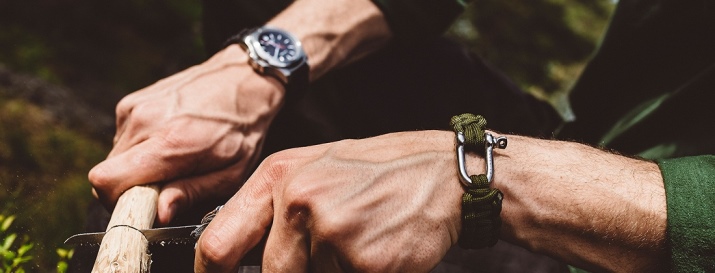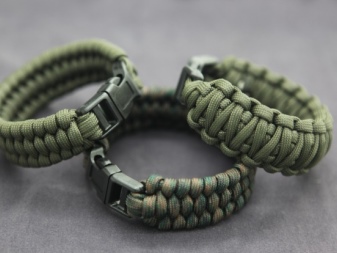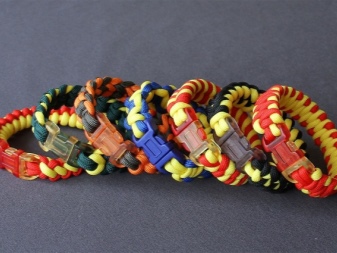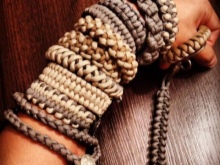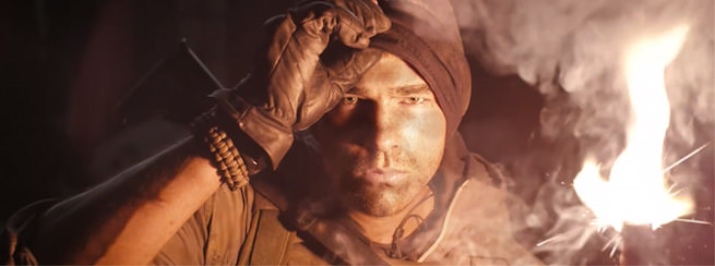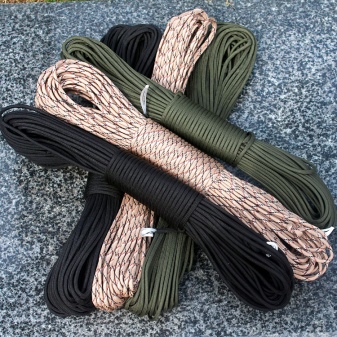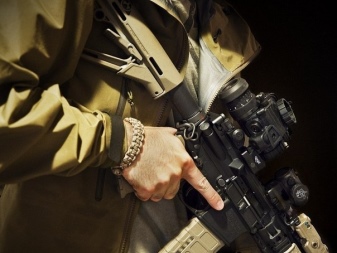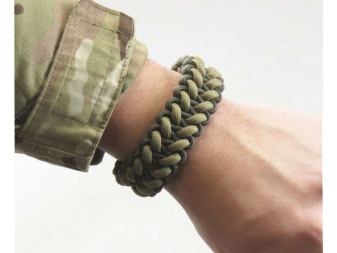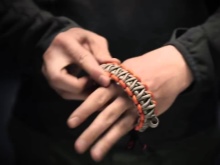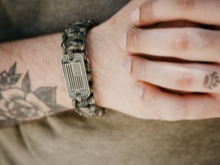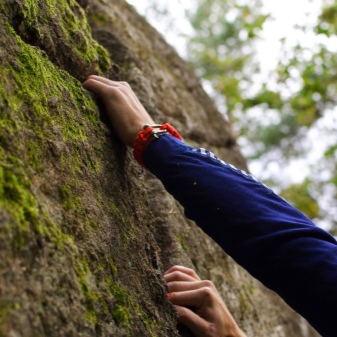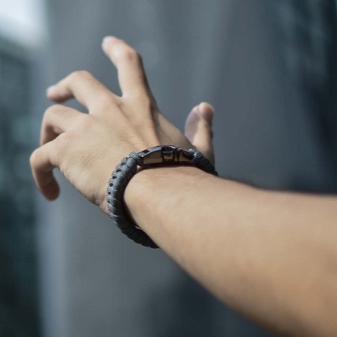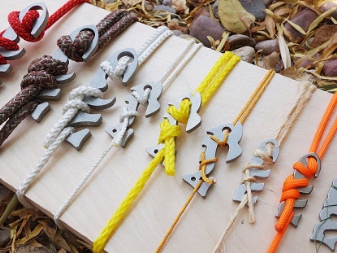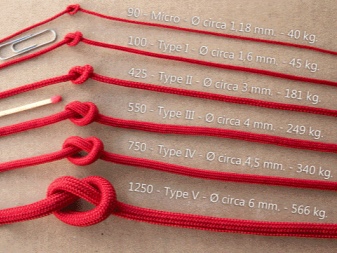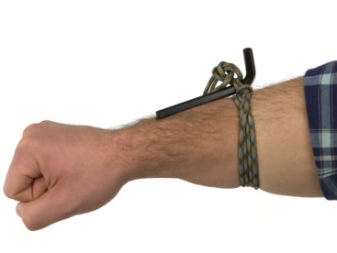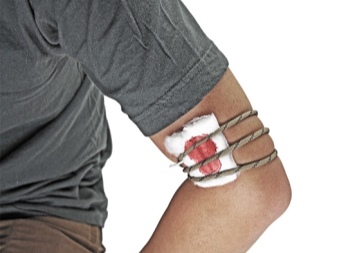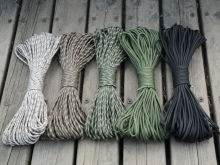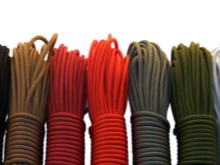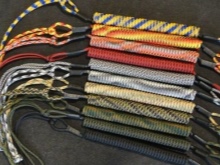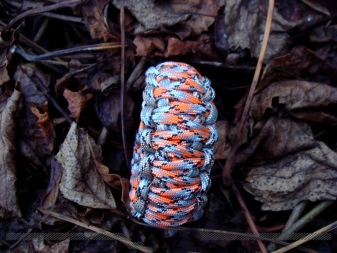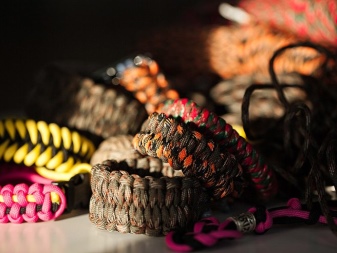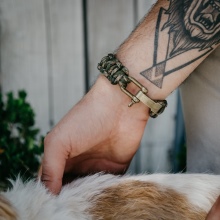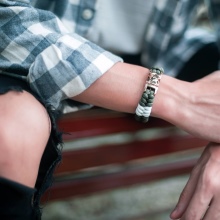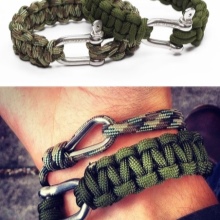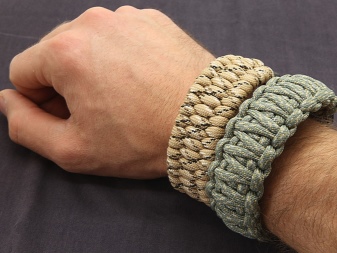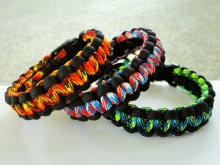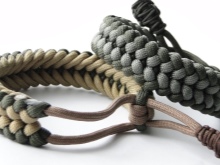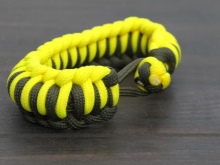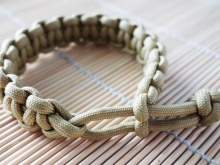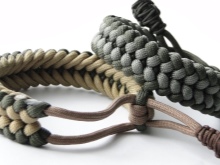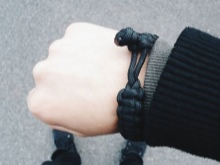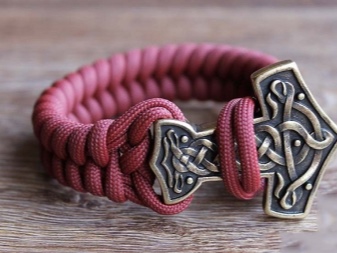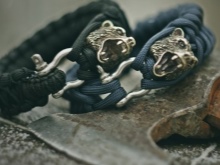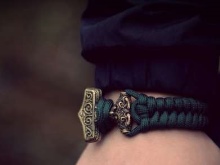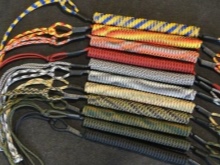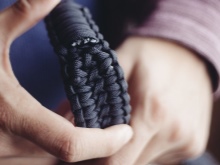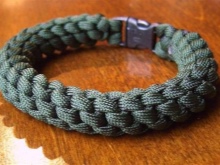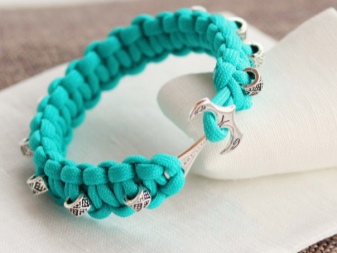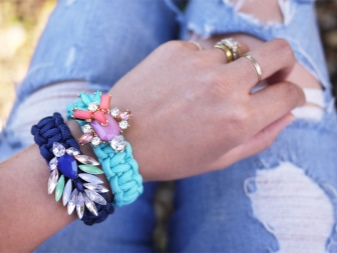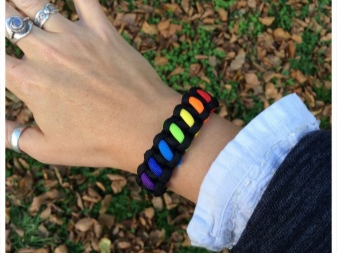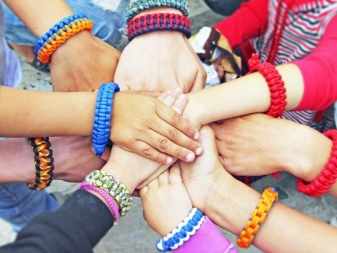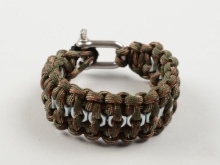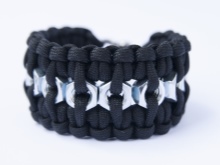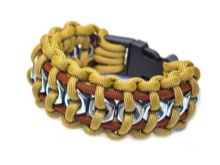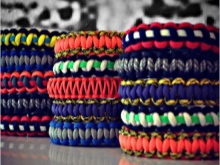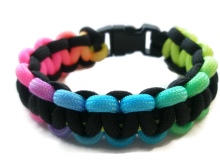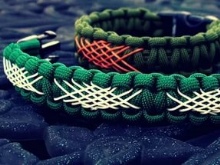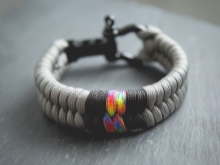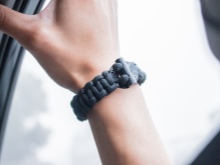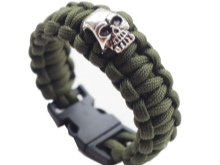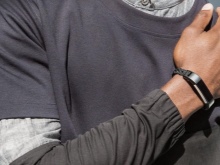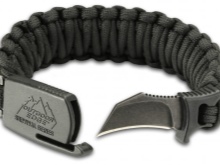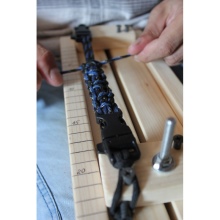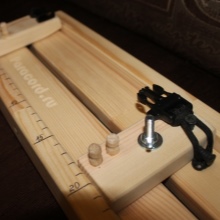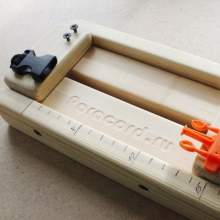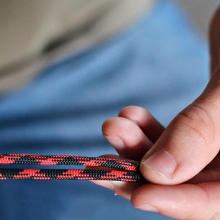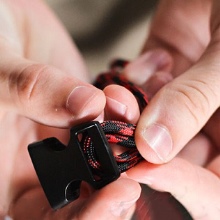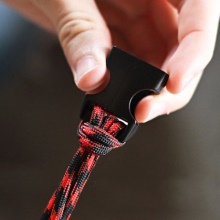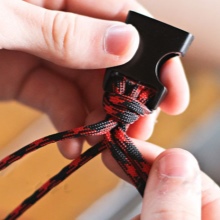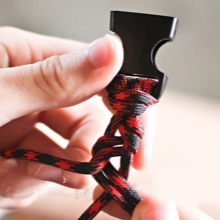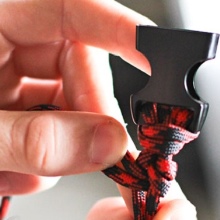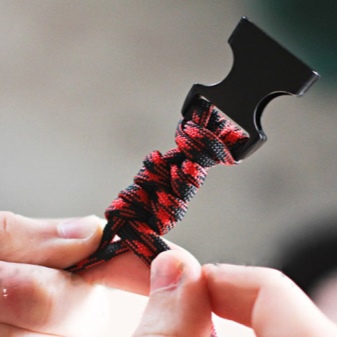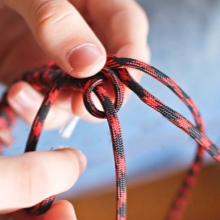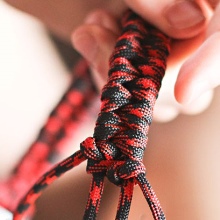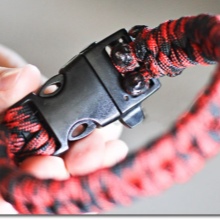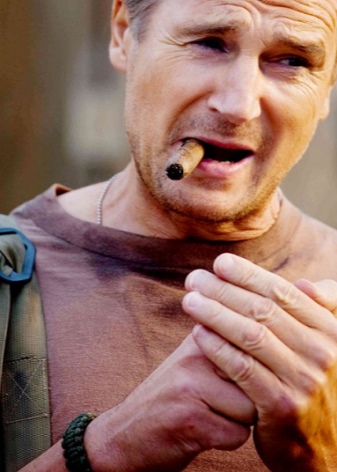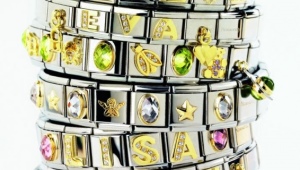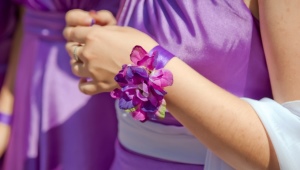Paracord bracelet

Experienced tourists know how to use a minimum of things in a variety of conditions. This is a very useful skill, because it is possible to save space, effort and time for fees. Therefore, do not be surprised bracelets and woven details in their wardrobe - this is not a whim and not a fad, but a very useful thing - bracelets and braids from parakord.
What it is
The paracord bracelet is woven by hand from a special elastic cord. If necessary, you unwind it, and at your disposal is about 4 m strongest rope. For survival in extreme and difficult conditions (climbing, fishing, hunting, hiking) is enough.
The peculiarity of weaving is that it can be quickly unfolded due to specific fasteners when the product is made without fastex. But the familiar and familiar fastener has its own characteristics:
- Fastex helps create weaving and fixes the rope;
- If you need to strand the cord, then the fastest is to break the buckle.
Thus, fastex buckle bracelets can be considered disposable.
Myths
Survival and military tactical games are always at the limit of human capabilities. If you watched issues about survival instructors, then you know that it is extremely difficult for a person to live in uninhabited places for several days (not that weeks or months).
But some want to test their strength and deliberately sent away from a comfortable life. For some, this is part of a hobby, work and profession, and someone is in a difficult situation unwillingly.
What helps in low comfort conditions? Unpretentiousness, physical conditioning and endurance, ingenuity and multifunctionality of available tools. The last is about paracord. Initially, it was used to equip parachutes and landing. Strong thin ropes came in handy to the military, so they managed to keep the cords, and at leisure they entertained themselves with weaving knots.
Whether practicality, or sentimentality prompted someone from the guys, for which the cord is suitable - for a bracelet. It is possible not only to weave it quickly, but also to unravel it if necessary. So the appearance of paracord in the form of an accessory on the hand became justified and understandable. And today it is a landmark detail, the design and appearance of which can make certain conclusions about its owner.
Strength of mind - this is what helps in difficult conditions, and various cunning and thoughtful gadgets greatly simplify survival. And they do not always have to be smart and technical, sometimes they are very simple and simple things - a quickly unwinding bracelet, for example. The absence of complex elements greatly simplifies such devices and makes them as convenient as possible. Even in ordinary life, they sometimes find use if you are in temporary isolation.
Composition
Paracord is a cord made of polymer heavy-duty fiber (the first samples were made of nylon), similar to those used to create parachute materials and are able to withstand huge loads, weight. This is achieved not only by the composition, but also by fastening: inside the cord there are several dense threads, a thin colored braid is laid over them. This increases strength and durability.
It is believed that the best ropes of this type are produced by the American military industry, and more affordable and cheaper counterparts can be found on Chinese websites.
By and large, it is not important where they produce what the fiber consists of, but tensile strength. This is an indicator of the maximum load for the thread. Depending on the category of paracord numbers differ. Most often, Chinese products withstand 100 kg, for paracord of the third degree, a value of 250 kg is indicated. Those.depends on it, only 1 person can stay on the rope or with additional load.
What is it for?
Here, it would seem, you go to a campaign - take a hank of rope. Experienced tourists do this. However, in a normal life, a spare cord will cause a lot of questions and surprise. On the other hand, it is such forethought that helps us in unforeseen situations when all the ropes are used for their intended purpose. For example, if you provide first aid and apply a tourniquet. Or, during a fire, you do not jump from the height of the third floor for good luck, but deftly untie the bracelet and use the rope (here you will help out products with large reserves of length - up to 10 m).
Therefore, a paracord bracelet is included in a protective set for every day - EDC (everyday carry). It does not require a separate place, lightweight, and is used as a regular accessory. Due to the bright (or muted) color is perceived as part of the style, without causing unnecessary and uncomfortable questions. And it's hard to forget, the cord is always at hand. In general, an indispensable and unobtrusive thing!
Kinds
The essence of the EDC bracelet is almost the same. The difference is in weaving and accessories - they can add new functionality. Due to the volumetric or complex knot in wide bracelets, you can additionally hide some extras or use meters of rope. Therefore, most often offer to purchase such paracord:
- Snake - one of the basic weaving, quite simple and spectacular.
- Cobra - This is a broader version, it is often made two-color, which enhances the similarity with a particular animal. Knitting can be bulk (like a rope), flat and wide. The schemes for paracord rarely have their own development, they are borrowed from ordinary handicraft, taking into account the necessary qualities.
Usually the length of the bracelet coincides with the girth of the arm, the fasteners help to put on the paracord easily. But sometimes it is knitted without fasteners at all. Some weaves make it easier to change the length. Others, on the contrary, fix the size more rigidly. The stretching bracelet is considered more comfortable and versatile. Its plus in the absence of the usual fasteners - with a narrow hand it is not always convenient. Someone rubbing the buckles, someone metal can cause allergies.
- With anchor - this designation of a fastener, visually is very similar to the real anchor. It has 2 holes, it is convenient to thread loops in them, and a hook catches the free end of the bracelet. This bracelet can be called quickly unraveling. A decorative buckle is not always an anchor, it can be made in the form of a Thor's hammer or look like an elvish element, and paracord bracelets are often chosen as an accessory by tolikienists and admirers of northern European mythology. Moreover, mating looks quite impressive and original.
- Multifunctional bracelets ("5-in-1", "3-in-1", etc.) is often referred to as tactical, military or professional. The peculiarity is the choice of color and volumetric (usually double) weaving, when the bracelet comes out so wide that you can fold it in half and hide something inside (popular options with flint, rings, carabiner, bolts, nuts). Or initially it fits into this pipe. Of course, the length of the paracord in such a product will be more standard and this is also an advantage.
- Women's Bracelet options also exist. They have more beauty and brightness. Sometimes for girls they are made with beads, stringing them on a rope during weaving. So the drawing becomes more interesting and elegant. But to the very survival of such products have little relationship, except for the material and whether it is quickly unleashed if necessary.
- But the opposite option - for boyswhen instead of beads weave a bracelet with nuts. This accessory is brutal and technical. If the guy is a technician, mechanic, mechanic, then he will be pleased to receive such a multifunctional gift.
Colors and decor
The pattern can also depend on whether a single or double thread is used for weaving.You can use more ropes. But then the length of each will be small, and quickly it will be difficult to stitch it. Therefore, the most commonly used are those paracords, where 1 or 2 ropes are involved.
If we are talking about more decorative than practical, then the options are three-color, four-color, etc. So that the ends do not stick out and do not fall apart, they are soldered, slightly melted. The correct paracord does not burn, so it is not necessary to be afraid of such manipulations.
Even two-tone variants turn out to be very elegant if you use bright and contrasting colors of the rope (blue and yellow, red and green). Very popular iconic and national combinations (St. George ribbon, tricolor colors, etc.).
But the young guys love complex drawings and elements - with skulls, flowers, anchors. When it is technically impossible to make a pattern by weaving, they will use decorative beads of a specific shape, stringing them onto a cord or weaving them into a bracelet. Such people buy more often than they do it themselves, since this requires more experience and skills in needlework.
Handwork
The peculiarity of paracord bracelets is always handmade. Of course, you can order on specialized sites (then different bonuses, multifunctionality, etc.) are waiting for you. but if you want to present an unusual gift or know a little what macrame is, then spend a couple of evenings studying knitting accessories. It will be a fascinating and informative lesson!
For training, any long cord (3.5-6 m) or a clothesline can be suitable, a clip (medical fits perfectly), a lighter to melt the cord. But for a quality bracelet you should look for the original paracord rope - you will not regret! Think over a fastener and get accessories in advance - fasteks, an anchor, etc. Depending on the buckle and the knitting method, the bracelet will have its own weaving characteristics.
For example, if we weave the easiest option, then use a measure for the length of the bracelet - the wrist girth. Experienced knitters can work exclusively with their hands, but for beginners it is better to ease the task and weave a bracelet using a blank - a staff or a plate, in which pins or nails are hammered into at a distance. At one end there are 2 nails, on the other hand - 1. These pins will play the role of fixatives and will greatly facilitate knitting. If weaving a bracelet on a fastex, then one part of the fastener can be used for fixing instead of 2 nails.
You can use different schemes, but first try to weave a snake. In addition to the base cord, you need a cord for the sheath itself. Measure out its middle and place under the thread the base stretched on the workpiece under the buckle or on top (the base consists of 4 vertical lines). The left end of the paracord is wrapped over the outer edge over the first and second vertical, and the right end is mirrored over the fourth and third so that its part is above the left end.
Now these parts are “reversed” and we repeat everything again, passing the cords around two vertical bases. In this case, the paracord is interlaced in the middle, between the second and third thread of the base. It turns out pretty quickly and carefully.
The fastener is the second most difficult moment. If you weave without fasteners-accessories, then the ends must be brought together and braided in a diamond knot (diamond, diamond). First you need to pass the thread through the improvised loops at the beginning of the bracelet, if it is stretching, because the knot turns out to be bulky. The end of the rope is melted so that the threads do not break.
If we use fasteners, we initially hid 2 loops (drop them into fastex or anchor holes), fixing them. We fix the free ends with the second part of the fastex. With a decorative buckle will be more difficult - we scorch the ends on the back side of the bracelet so that they do not catch the eye, leaving the bottom edge of the loop free. Put the bracelet on the hand and cling to this loop. Your bracelet is ready!
You can weave a snake and one thread without fittings.Then first weave a knot-diamond, leave a small gap of a couple of millimeters and fold the accordion as a letter W, the height of the bracelet. Carefully pass the free tip of the cord towards the knot from the bottom, then pull it up through the side, tightly covering the right half of the "accordion", pull it under the left side and pull it out through the side, fold it down to the right and right in the middle. And so on to the very end.
To complete such a bracelet, you need to skip the paracord through the loose loops from the "accordion". Fasten a simple but strong knot on the outer loop. Trim free end and melt. The bracelet is made! Now you can master other schemes, since the principle itself is clear to you.
Being involved in knitting, you can practice to dismiss the paracord. Such skills help out in extreme conditions - honed movements save valuable time, fingers shake less and get confused. When extreme control and your life does not depend on any trifles - this is great. But if it so happens, then you will be helped by knowledge and survival skills, and the paracord bracelet is needed to quickly unravel if necessary.
How to weave a bracelet "snake" - in the next video.
